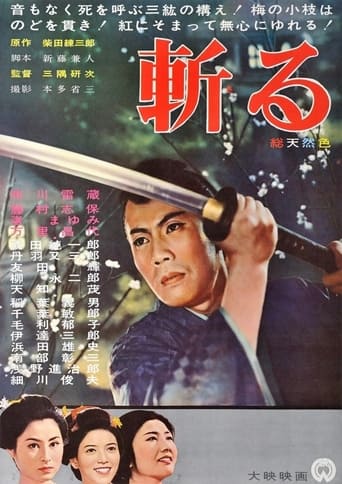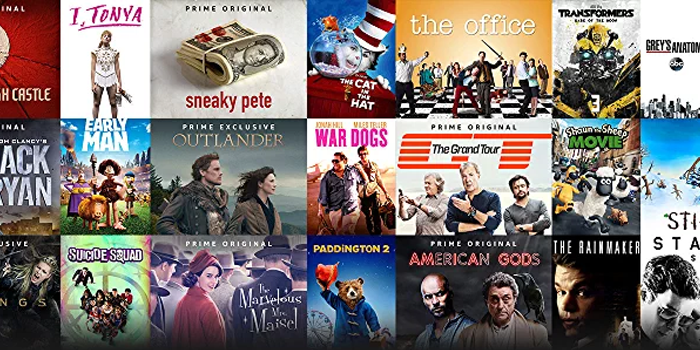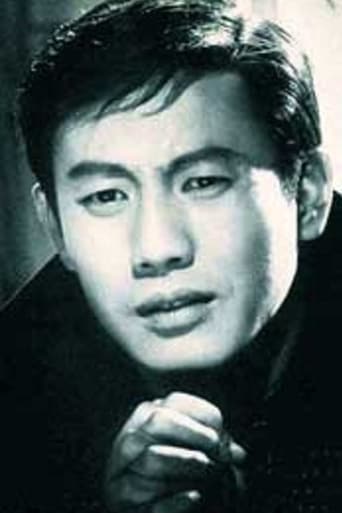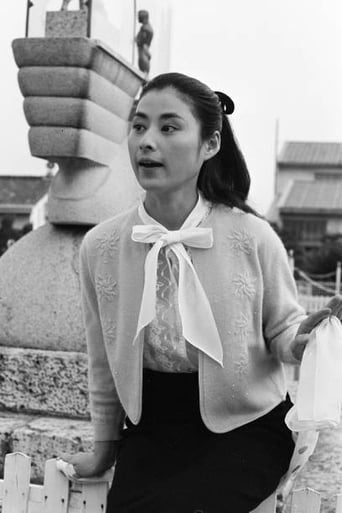

Destiny's Son (1962)
The son of an executioner and the assassin he loved yet murdered learns of his origins, leaving his foster parents to avenge his mother's death.
Watch Trailer
Cast


Reviews
Wow! Such a good movie.
Absolutely Brilliant!
The storyline feels a little thin and moth-eaten in parts but this sequel is plenty of fun.
All of these films share one commonality, that being a kind of emotional center that humanizes a cast of monsters.
On paper, this may seem like another in a long line of Daiei star vehicles for their leading box office draw, Raizo Ichikawa. Misumi himself had already directed him in a few of those potboilers (the SATAN'S SWORD trilogy). I dunno if it should be ascribed to the zealousness of a young director eager to break free from the constraints of studio production-line film-making, if Misumi intended it as a calling card that would help him graduate into the A-list club that included Masaki Kobayashi and others, or if, concerns about status be damned, it should serve as exhibit A in the case many of us have been trying to make about Misumi as a righteous auteur with a directorial voice all his own separate from the bulk of genre filmmakers, but Kiru screams stylized masterpiece even from its opening prologue and it's obvious it was pieced together with great care and superior craftsmanship.The slow deliberate pacing and eliptical minimalist storytelling one would sooner find in an art-house film than a chambara is broken by sudden bursts of violence, these emphasizing not bodycount and arterial sprays but beautiful choreography between camera and characters, with the killings often as not taking place off screen. In filtering his chambara dynamics through a meditative mood, in giving more weight on the preparation rather than the fight (with duels edited in a Leone fashion a few years before Leone, tight closeups of eyes and bodies et al), Kiru soars above anything else Daiei was producing at the time to occupy the same stylized moody genre space others like Jean Pierre Melville would arrive years later. The gloomy fatalism and visual grammar is all Misumi's though and it would continue to show up in his work in the coming years, although stunning shots like the circular overhead shot of Ichikawa opening doors in search of his boss would rarely be repeated.Misumi may never get the critical acclaim and Criterions other of his peers who created in genre film-making like Yasuzo Masumura (also in Daiei), Masahiro Shinoda (in Shochiku) and Seijun Suzuki (in Nikkatsu) have enjoyed because he never got on board the Japanese New Wave wagon, but Kiru is proof enough that he was one of the master directors of his generation.
The same year he directed the first of the Zatoichi series, Kenji Misumi directed this tale based on a famous novel by Renzaboro Shibata. With an eye for composition, Misumi created an amazing bit of visual cinema.The story follows the adult life of Shingo, a humble orphan raised by a low ranking samurai. He decides to to wander Japan for three years and returns with an unexpected new skill; he can bring swordsmen to their knees quaking in fear just with a sword pose. This technique, unfortunately brings tragedy to Shingo's family and he ends up wandering in misery after they are killed by jealous samurai.There are marked similarities with Misumi's later film, "Ken Ki" which is also based on a book by Renzaboro Shibata. Unfortunately in this film, unlike "Ken Ki" and like many other films based on a famous novel, much of the story seems to be told in short hand as if the audience is expected to be familiar with the story and characters already. It's a testament to Misumi's talent that the movie works so well visually, we can forgive the odd jumps in time and the sparse character development. Curious since the movie is unusually short for a Japanese film. By 40 minutes in the movie settles down and everything works much better dramatically. Some of the shots are amazing masterpieces of composition. The action is well done.If you are looking for more rounded entertainment, I recommend "Ken Ki" over this. That is not to say that this film isn't with rewards of it's own but it's a demanding work to watch.The DVD I saw had an original trailer for "Kiru". It strangely contains a scene that wasn't in the film. This scene is very interesting as it ends in an extreme bit of action that foretells Misumi's later work with the Lone Wolf series.
Though I have not seen many Samurai films, Kiru is the best I have seen so far. Its complex story line mirrors the lead character`s internal struggles and leads to an incredible final sequence, all in 70 minutes.The story revolves around a young man who wishes to travel for the experience, and returns home two years later as a talented swordsman, much to the surprise of all. His talent doubly infuriates his neighbor, who has already suffered embarrassment due to his son`s poor swordsmanship. The neighbor retaliates by sullying the name of our hero (calling him adopted) and then murdering his sister and father. Thus begins our hero`s life as a ronin.The allegations of his adoption are true and open up a complex history and a tale of true love that led to his adoption as an infant. The fight scenes show real ingenuity, including a fight involving a woman that continues to haunt both the hero and this author. The final climactic scene is a work of cinematic art. The director had me completely on the edge of my seat through silence and camera angles, along with superb acting. Try watching the infamous horse`s head scene from The Godfather with the volume turned off. Then watch this final scene and marvel at the director`s brilliant ability of maximizing tension with minimum distraction.This author saw the film at the Kyoto branch of the Japan Foundation in Feb 2003. The film was shown in its original wide-screen version and belongs to the Japan Foundation film archives.




